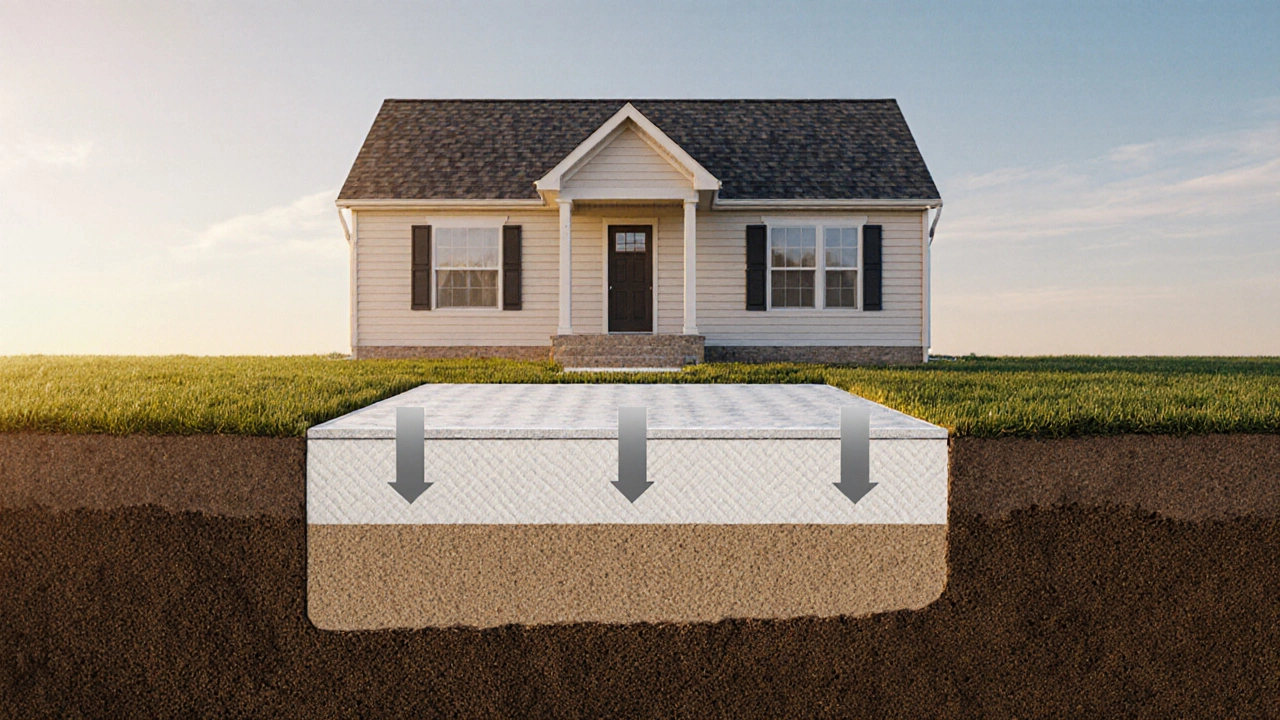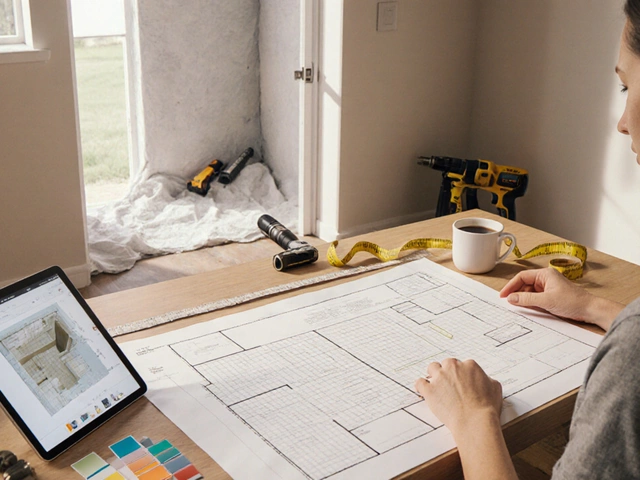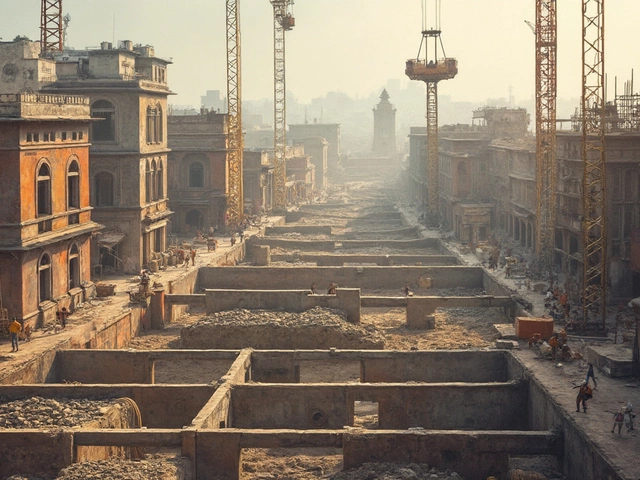Foundation Settlement Assessment Tool
Measure Your Home's Settlement
This tool helps you determine if your home's foundation settlement is within normal ranges based on the UK standards described in the article.
Enter measurements to check your settlement status
When you notice a new crack in the wall or a floor that feels slightly uneven, the first thought might be: foundation settlement. But is it something to panic over, or just a regular part of a building’s life? This guide walks you through what counts as normal settlement, when it turns into a warning sign, and how to act before small issues become big expenses.
What is foundation settlement?
Foundation settlement is the gradual downward movement of a building’s supporting structure as the soil beneath it compresses or adjusts. All homes experience this to some degree because soil isn't perfectly rigid. Think of it like a mattress that slowly conforms to your body over time - the same principle applies to earth under a house.
Why does soil move?
Soil is a living, breathing material. Its behavior depends on type, moisture level, and the loads placed on it. The most common drivers are:
- Soil type - Clay, sand, silt, and loam each react differently to water and weight.
- Moisture content - Too dry makes soil shrink; too wet makes it swell.
- Changes in load - Adding a heavy shed, a pool, or even a large pile of furniture can concentrate pressure.
Typical settlement ranges
In the United Kingdom, most new builds settle between 5 mm and 25 mm in the first two years. This amount is usually spread evenly across the foundation, so you won’t notice it unless you specifically measure.
Older homes, especially those on Pier and beam foundations, often show a bit more movement because the individual piers can sink at slightly different rates.
Red flags: When settlement becomes a problem
Not all settlement is harmless. Keep an eye out for these tell‑tale signs:
- Cracks wider than 2 mm that appear suddenly, especially around doors and windows.
- Doors that stick or windows that won’t close properly.
- Uneven floors that can be measured with a level - a variation over 5 mm across a room is concerning.
- Exposed Crack patterns that follow a stair‑step shape, suggesting differential movement.
If you notice any of these, bring in a qualified Structural engineer for a detailed assessment.
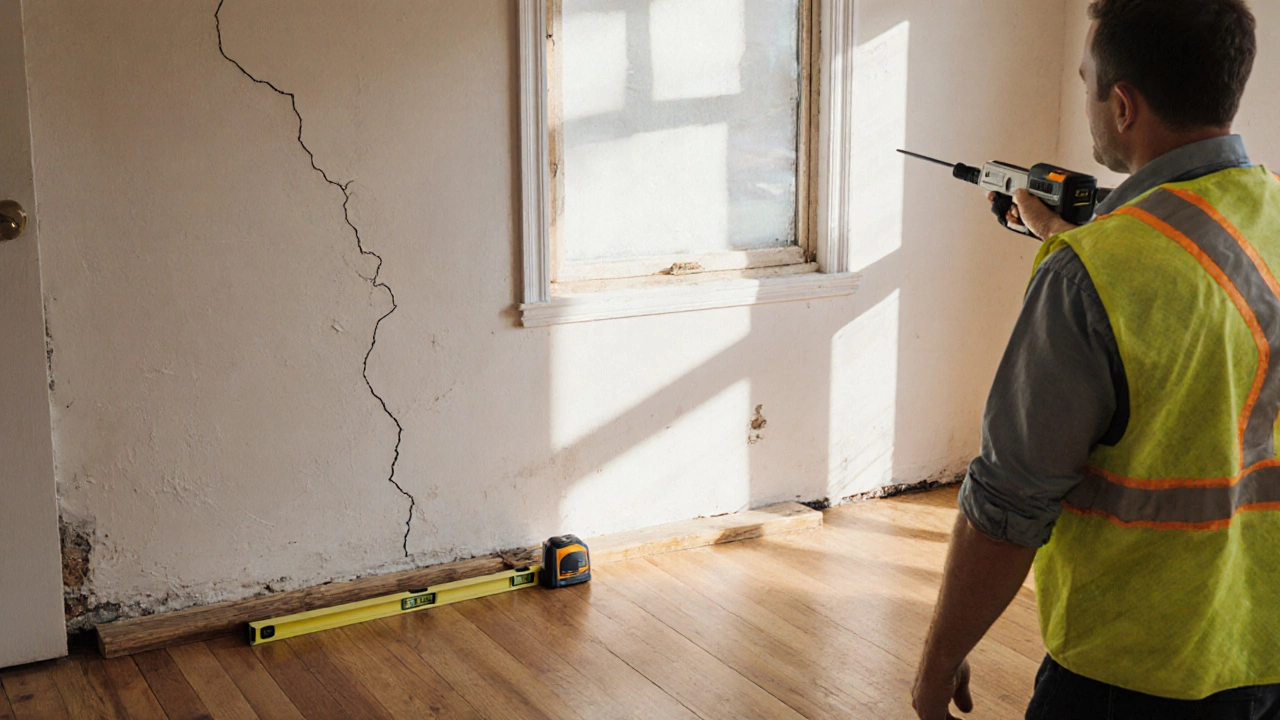
Understanding differential settlement
Sometimes part of a building sinks faster than another part. This is called Differential settlement. It’s especially common on sites with Expansive clay soils that shrink and swell dramatically with moisture changes.
In a worst‑case scenario, one corner of a house could drop several centimeters while the opposite corner remains stable, leading to severe structural stress.
How professionals monitor settlement
When a potential issue is spotted, experts often employ:
- Laser levels or digital inclinometers to measure floor slope.
- Settlement plates - small steel plates embedded in the foundation that record movement over time.
- Soil moisture sensors to track changes that could trigger swelling or shrinking.
These tools help distinguish normal, gradual settlement from rapid, problematic movement.
Repair options for excessive settlement
If the assessment confirms that settlement exceeds safe limits, several repair methods are available:
| Method | Best suited for | Typical cost range (GBP) |
|---|---|---|
| Underpinning with concrete pier | Deeply settled footings, especially on soft soils | £8,000 - £15,000 |
| Helical screw piers | Limited access sites, quick installation | £4,000 - £9,000 |
| Grouting (pressure injection) | Minor settlement, stable soils needing stiffness | £2,000 - £5,000 |
| Soil stabilization (lime/cement mix) | Expansive clay zones, preventive measures | £3,000 - £7,000 |
The right choice depends on the foundation type - for example, a Concrete slab may benefit more from slab jacking, while a crawl‑space home could need pier reinforcement.
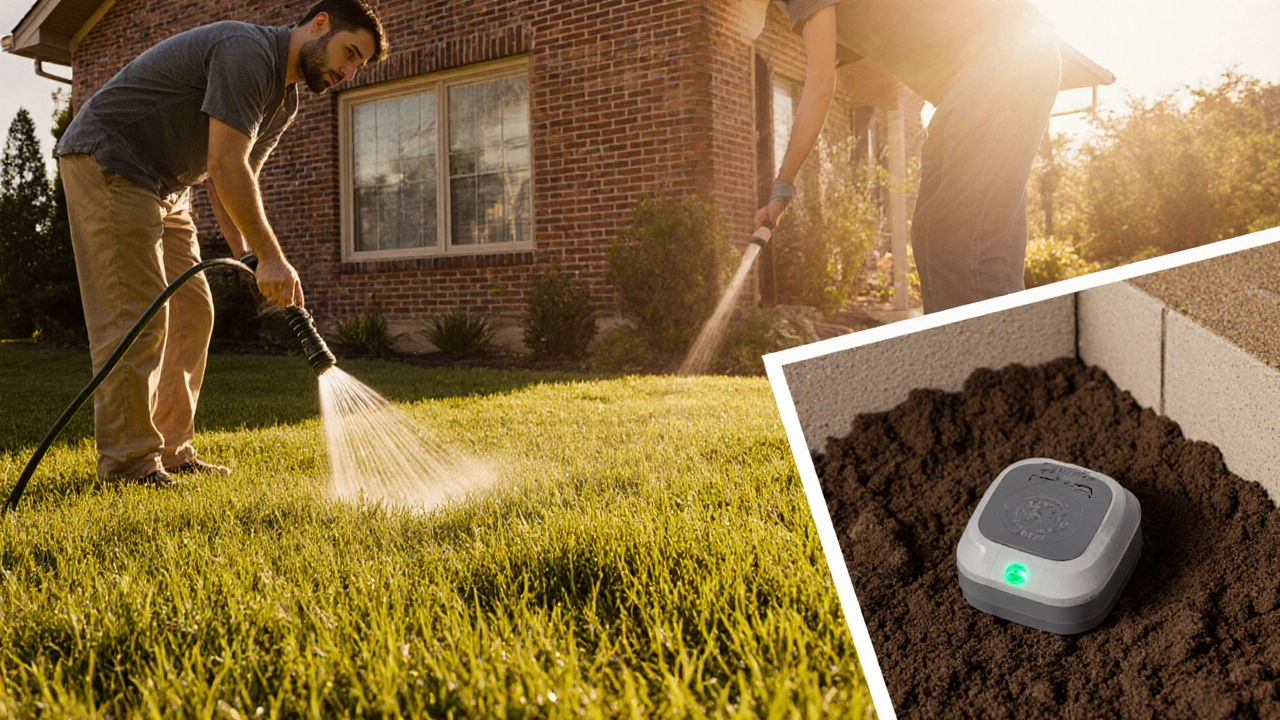
Preventive steps you can take today
Even if your home is currently within normal settlement limits, simple habits can keep the movement in check:
- Maintain consistent lawn watering - avoid long dry spells followed by heavy watering.
- Inspect gutters and downspouts regularly; water pooling near foundations accelerates soil saturation.
- Avoid placing heavy items directly over foundation walls.
- Consider a professional moisture sensor survey if you live on known expansive soils.
These actions reduce the risk of a sudden shift that could turn a harmless settlement into a costly repair.
Quick checklist: Is your settlement normal?
- Measure cracks - are they narrower than 2 mm and hairline?
- Check door/window operation - any new sticking?
- Use a level on floors - is the variation under 5 mm?
- Look for patterns - stair‑step cracks may signal differential movement.
- If any answer is “yes” to the above, contact a structural engineer.
Bottom line
Some settlement is a natural part of a house’s life, especially in the first few years. The key is to know the difference between the quiet, uniform sinking that’s expected and the sudden, uneven shifts that threaten structural integrity. By watching for tell‑tale signs, using simple monitoring tools, and acting early with professional help, you can keep your home safe and avoid pricey emergency repairs.
How much settlement is considered normal for a new house?
Typically 5 mm to 25 mm over the first two years, spread evenly across the foundation. Anything beyond that or concentrated in one area warrants inspection.
Can I fix settlement cracks myself?
Minor hairline cracks can be sealed with acrylic filler, but if cracks exceed 2 mm, shift, or appear suddenly, professional evaluation is essential to avoid masking a bigger problem.
What soil types cause the most settlement issues?
Expansive clays are the biggest culprits because they swell when wet and shrink when dry. Loose sand and silty soils also settle more quickly under load.
How long does underpinning take?
A typical underpinning project for a single‑storey house lasts 2‑4 weeks, depending on weather, access, and the chosen method (concrete piers vs. helical screws).
Is foundation settlement covered by home insurance?
Standard home insurance usually excludes gradual settlement. However, sudden collapses caused by severe settlement may be covered as an “accidental damage” claim.
